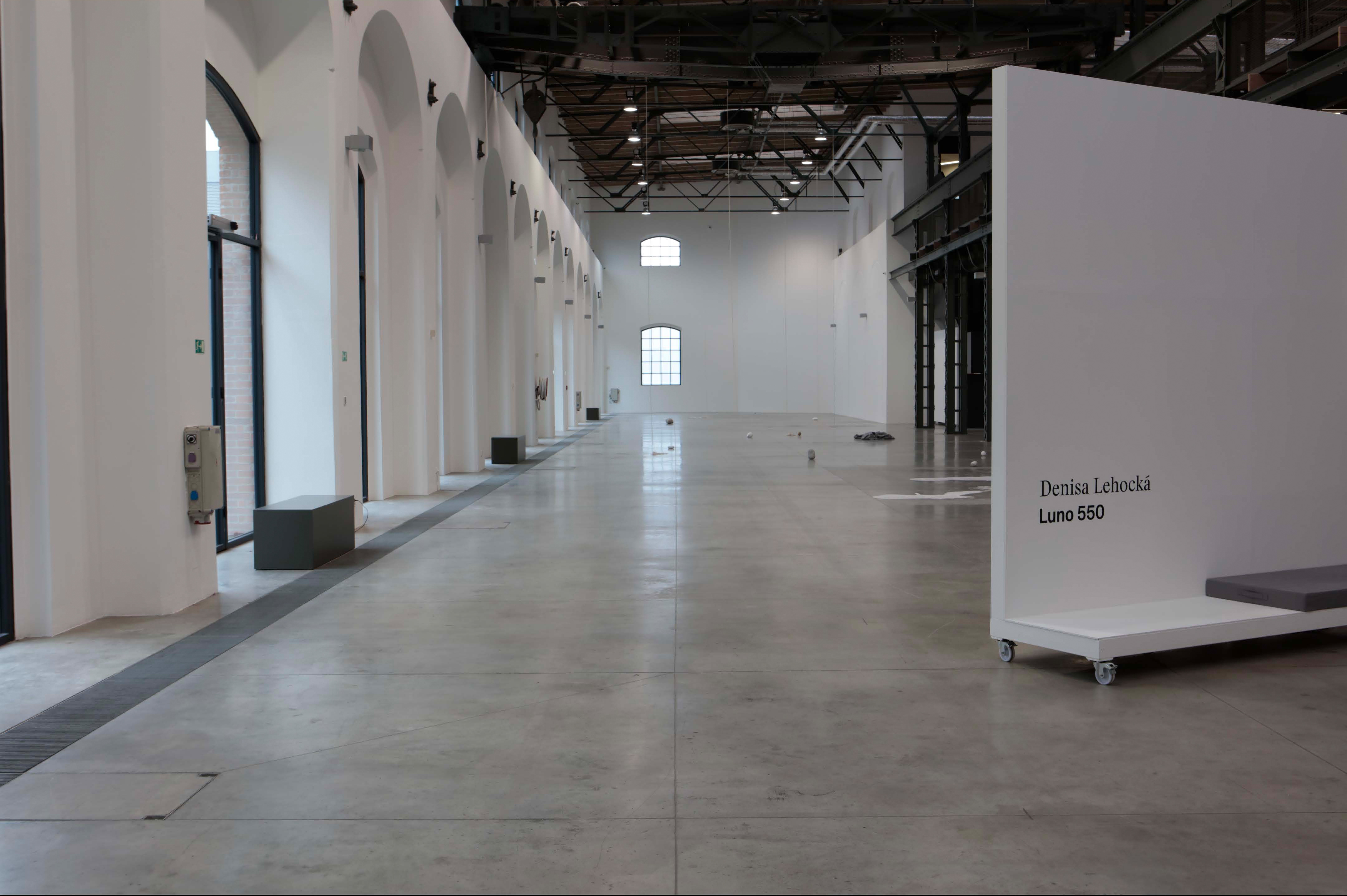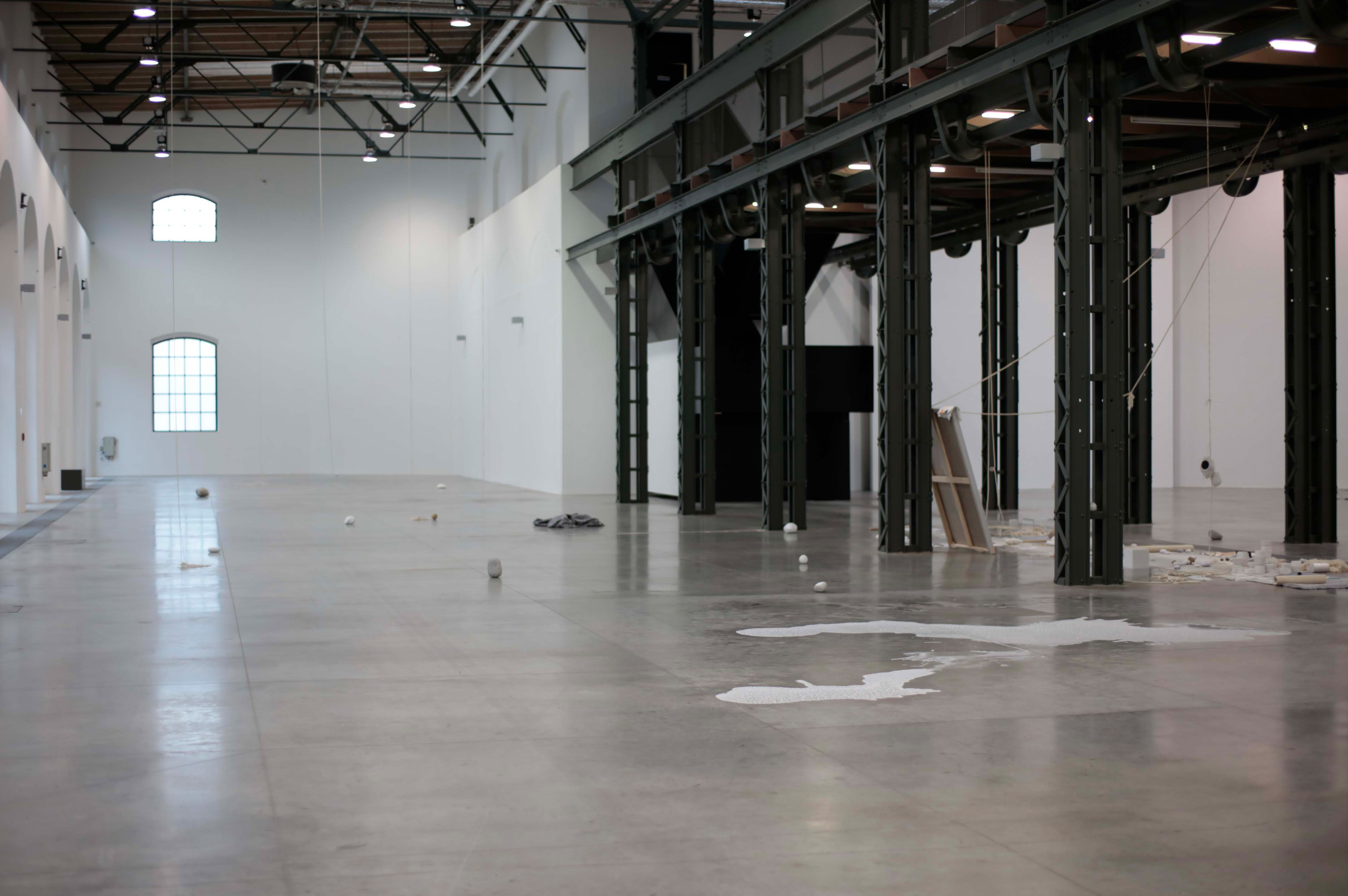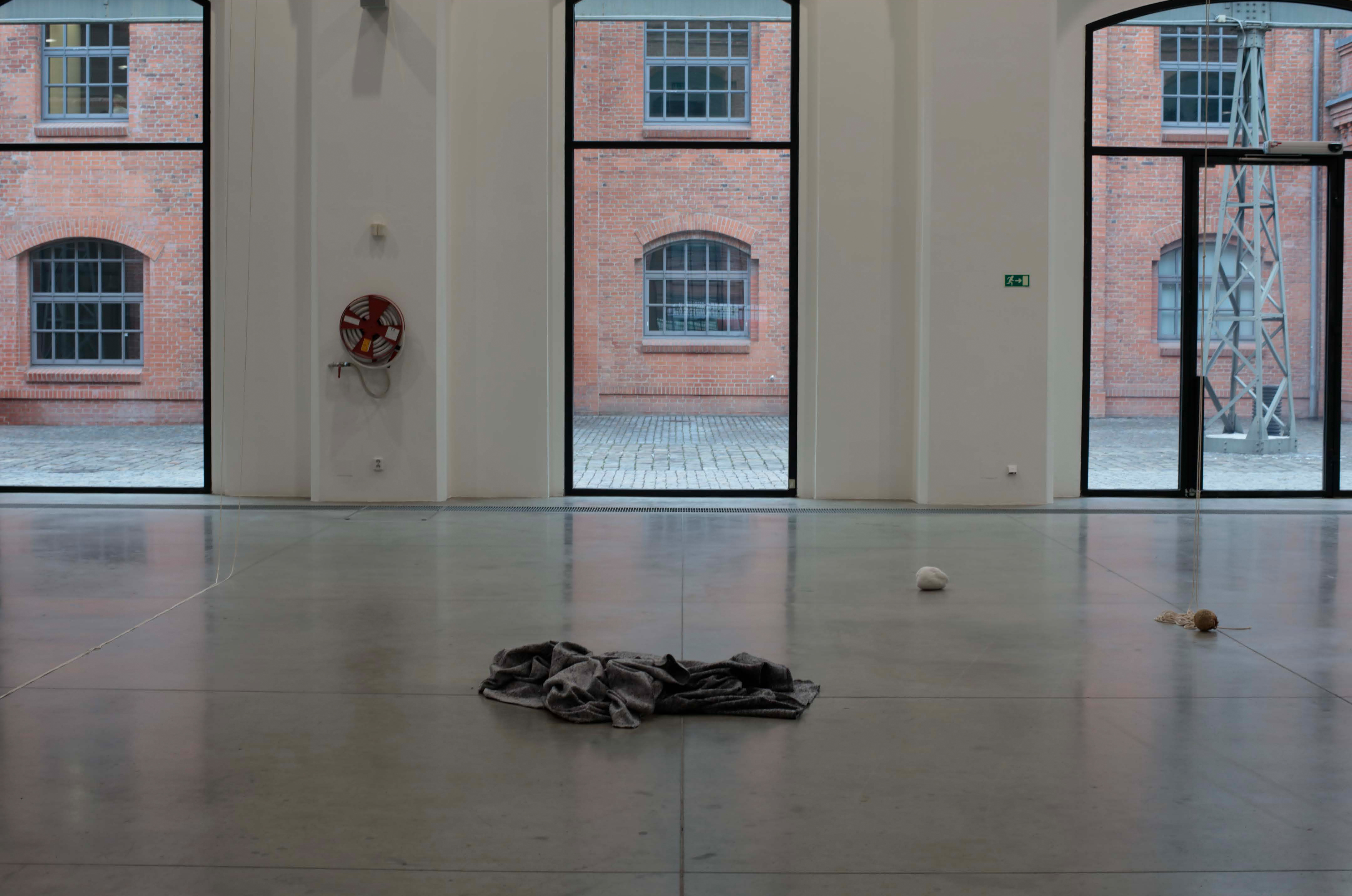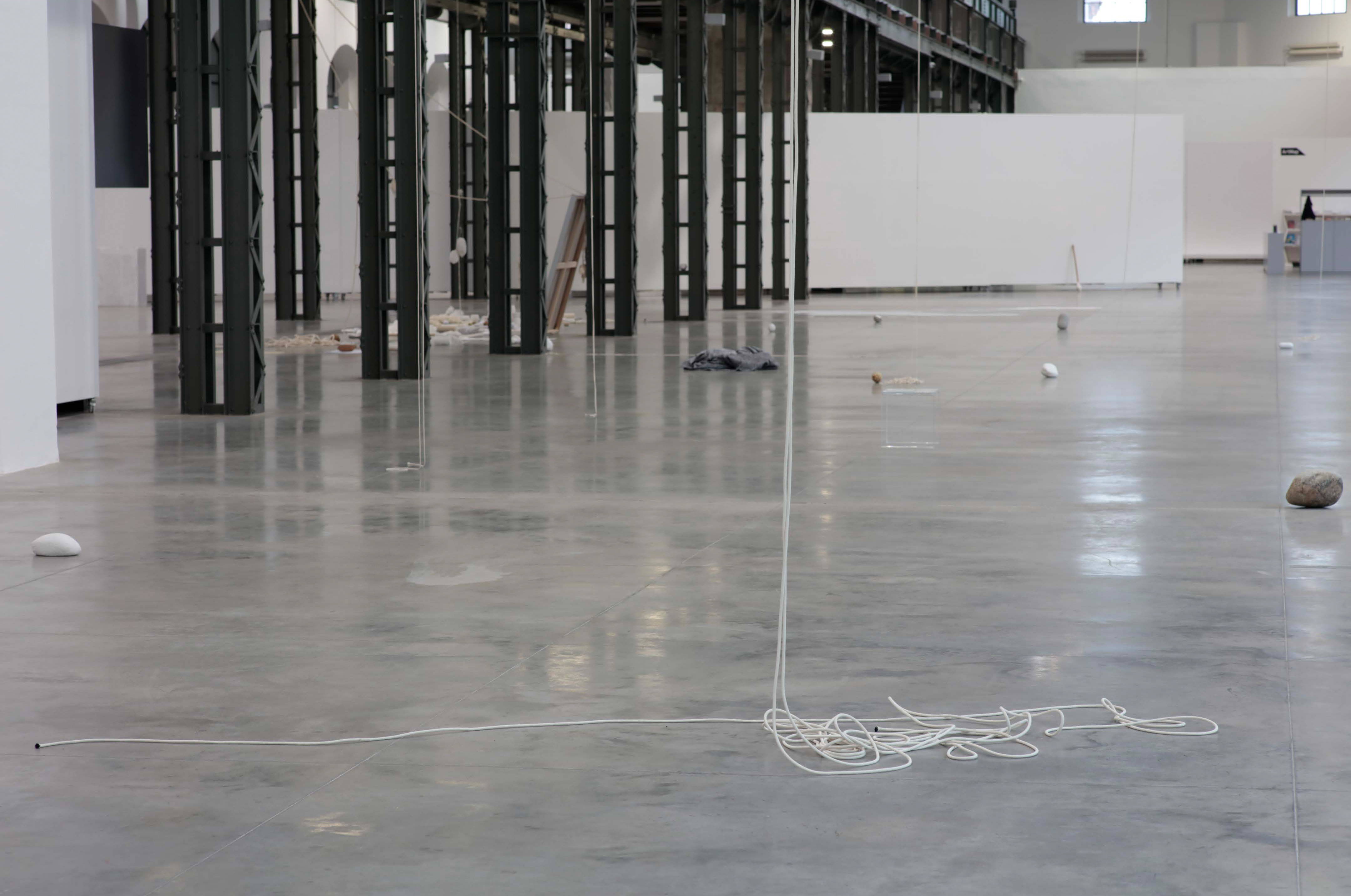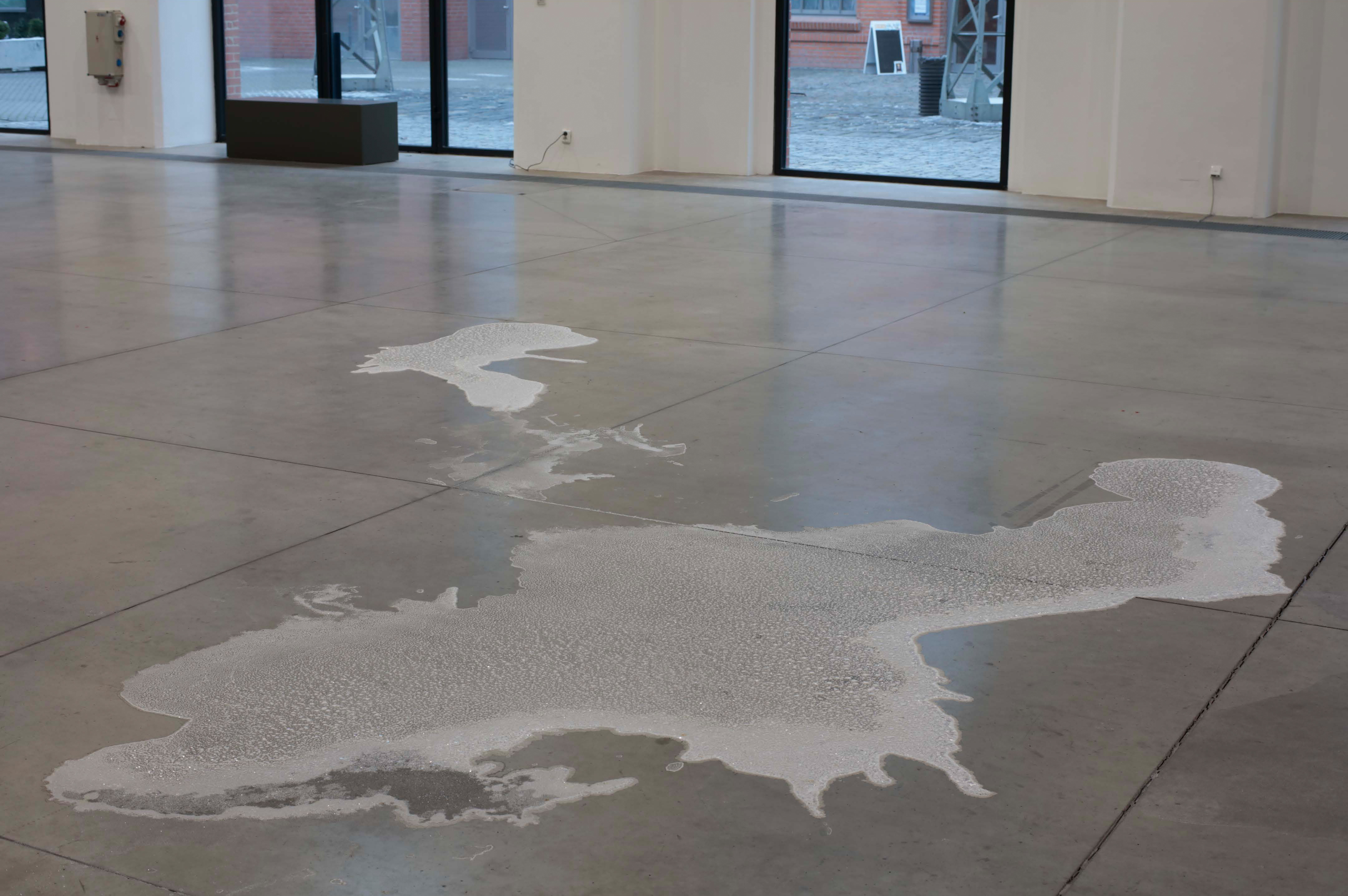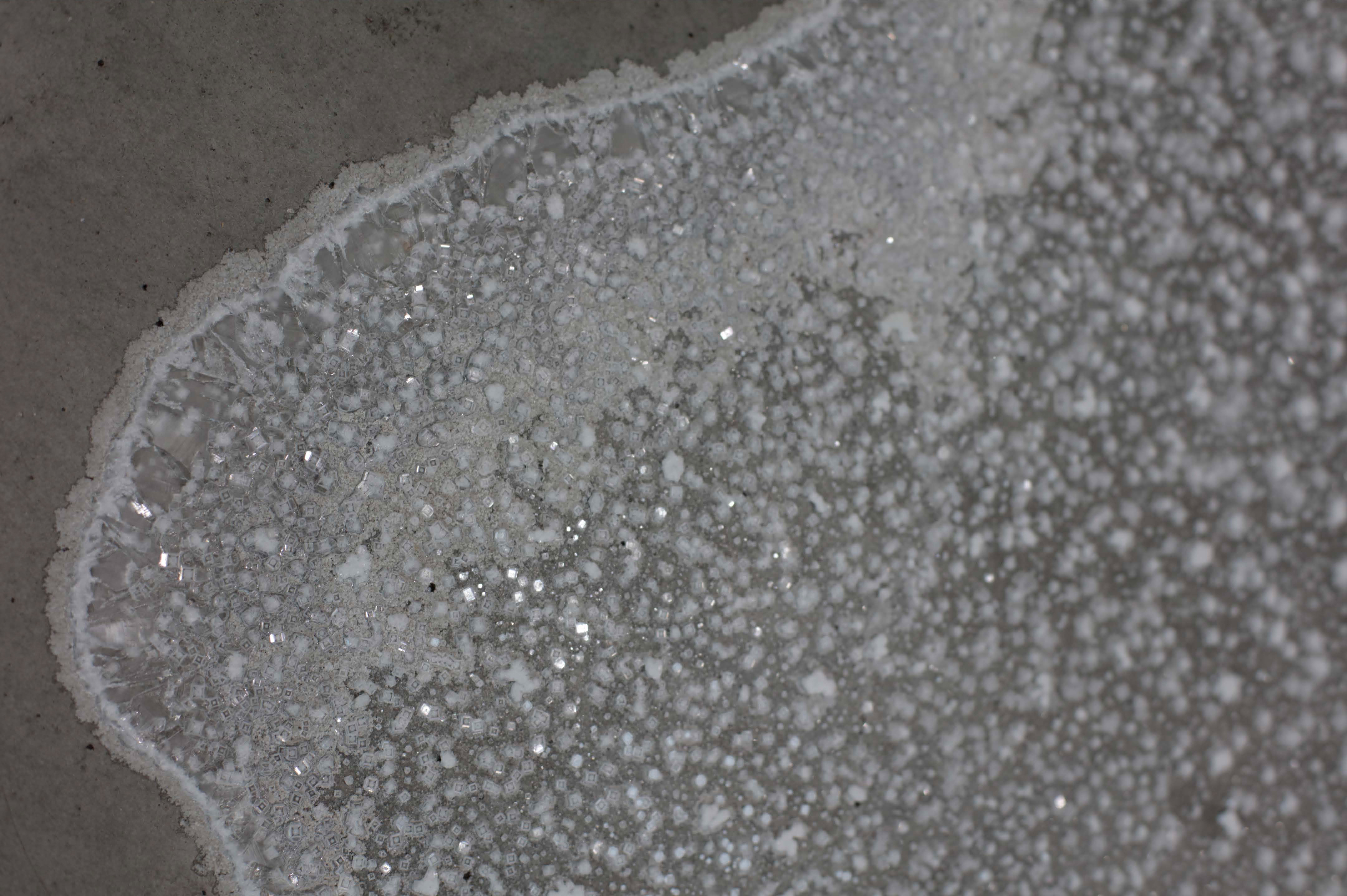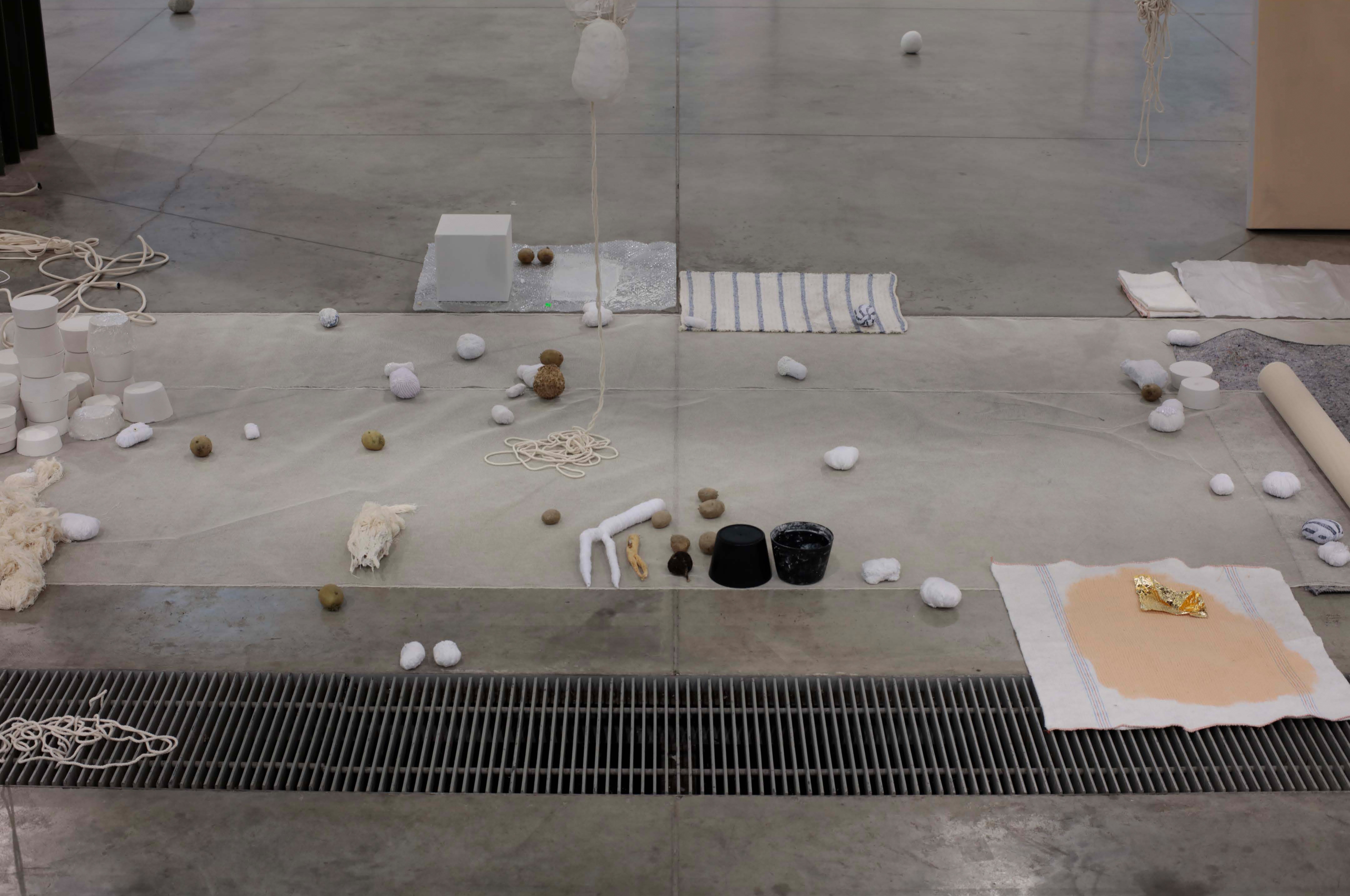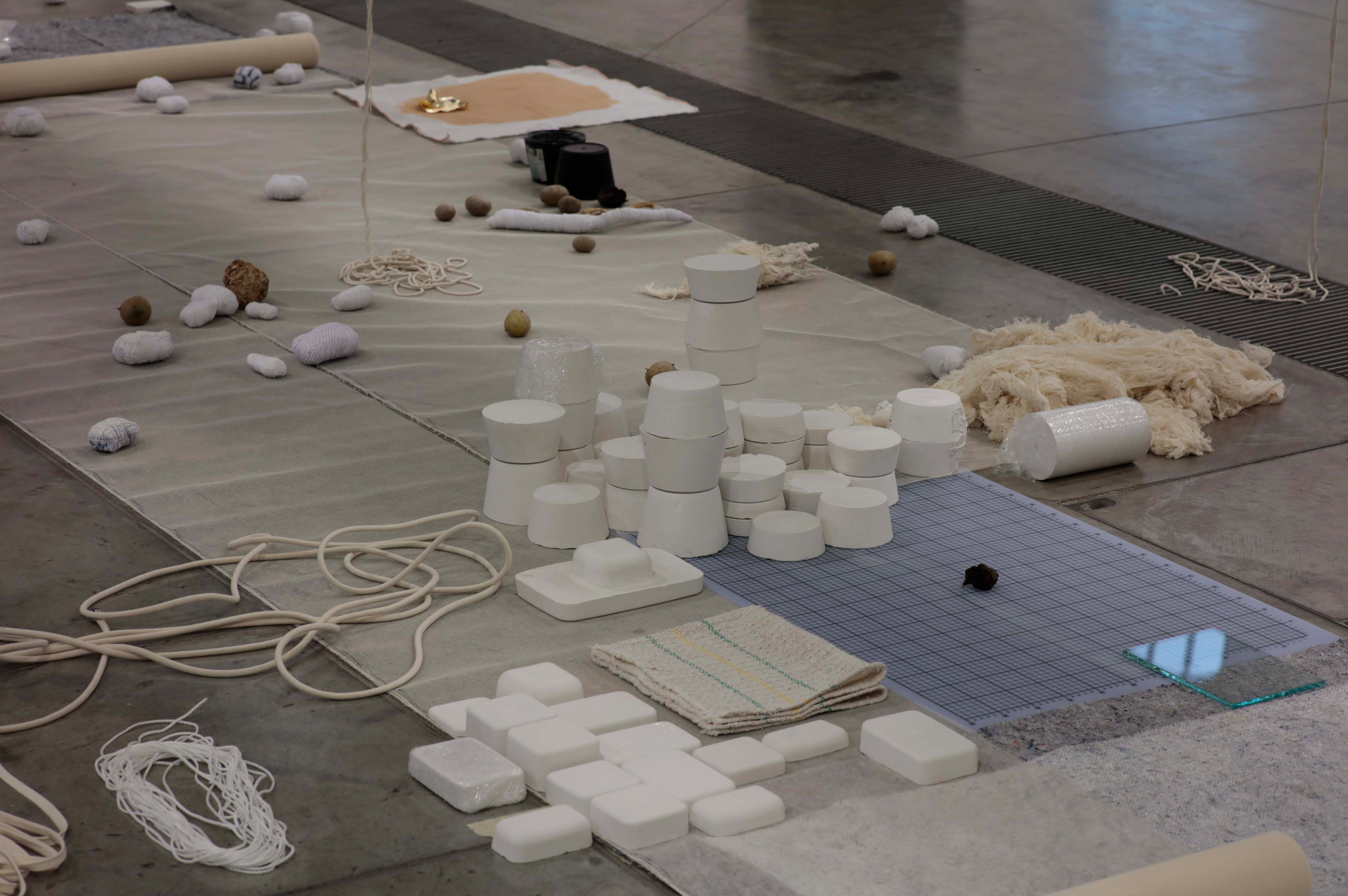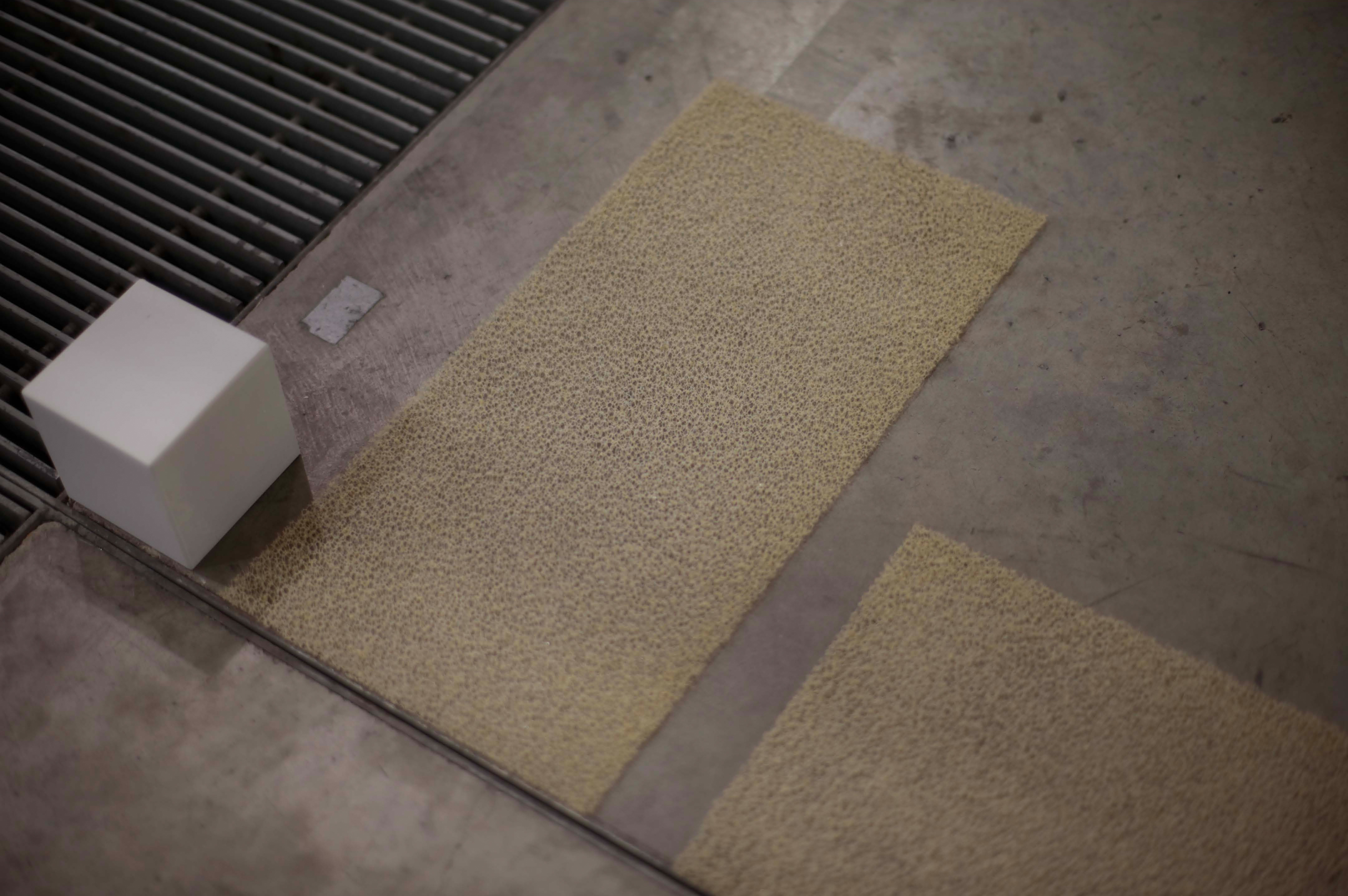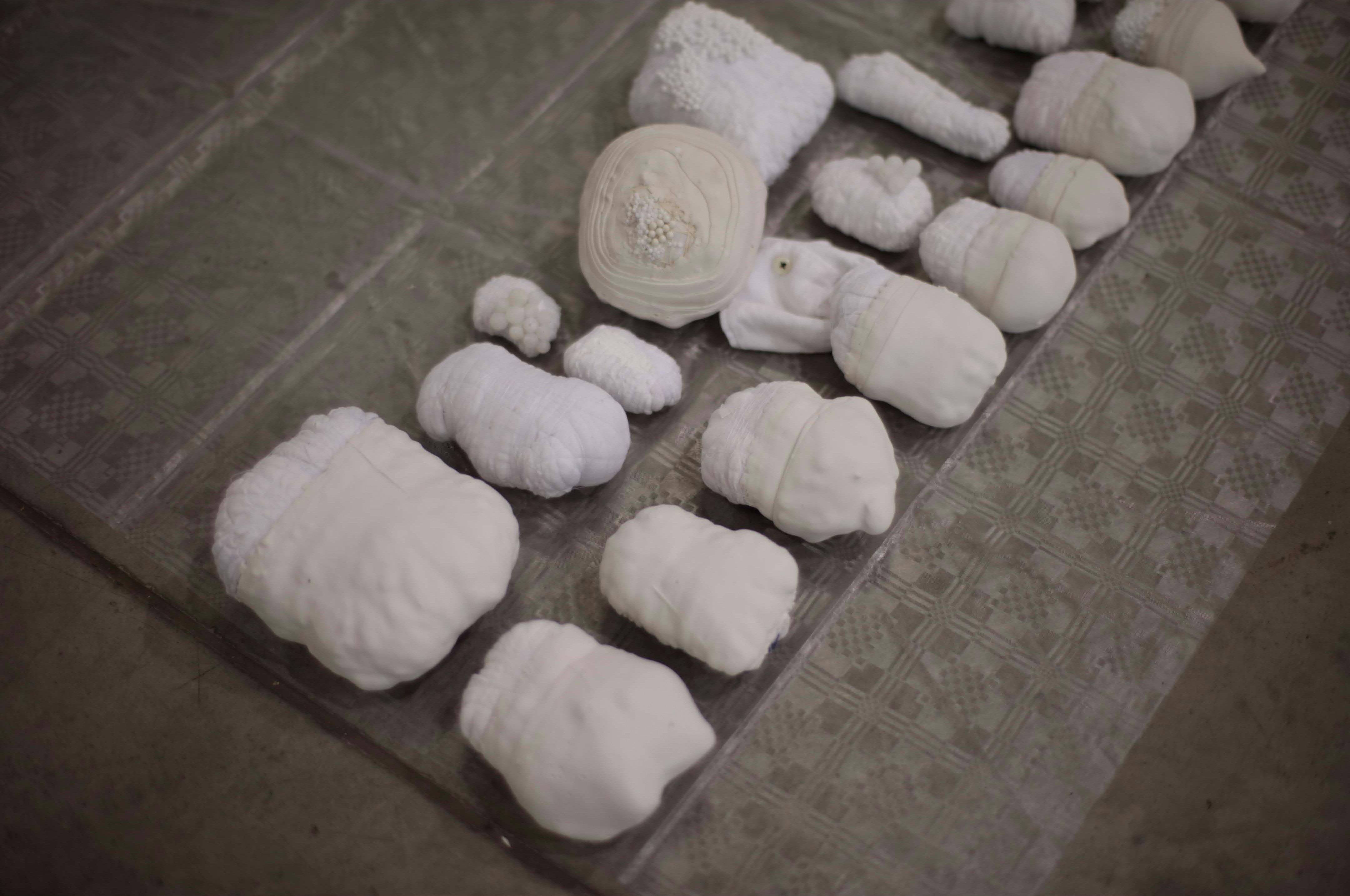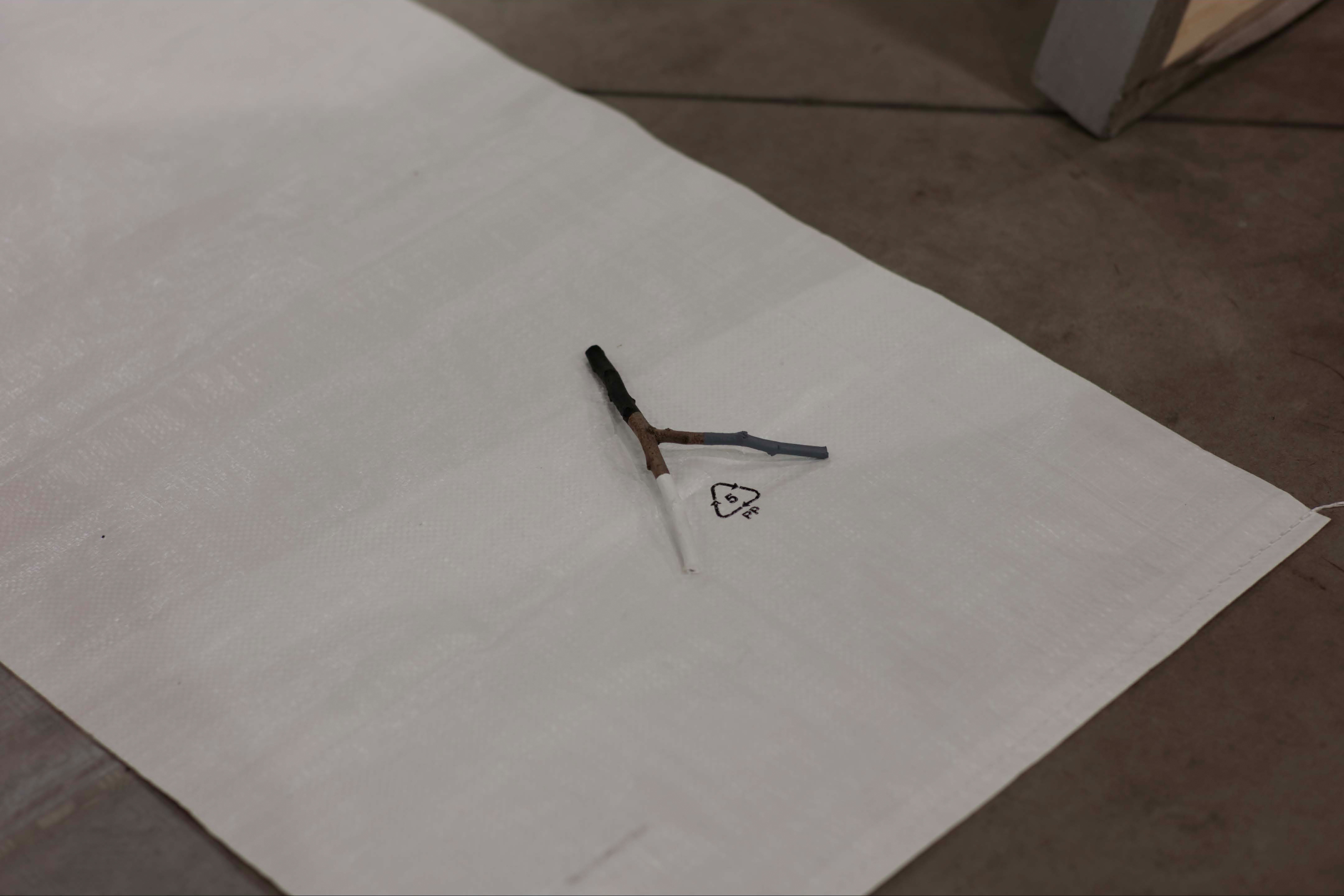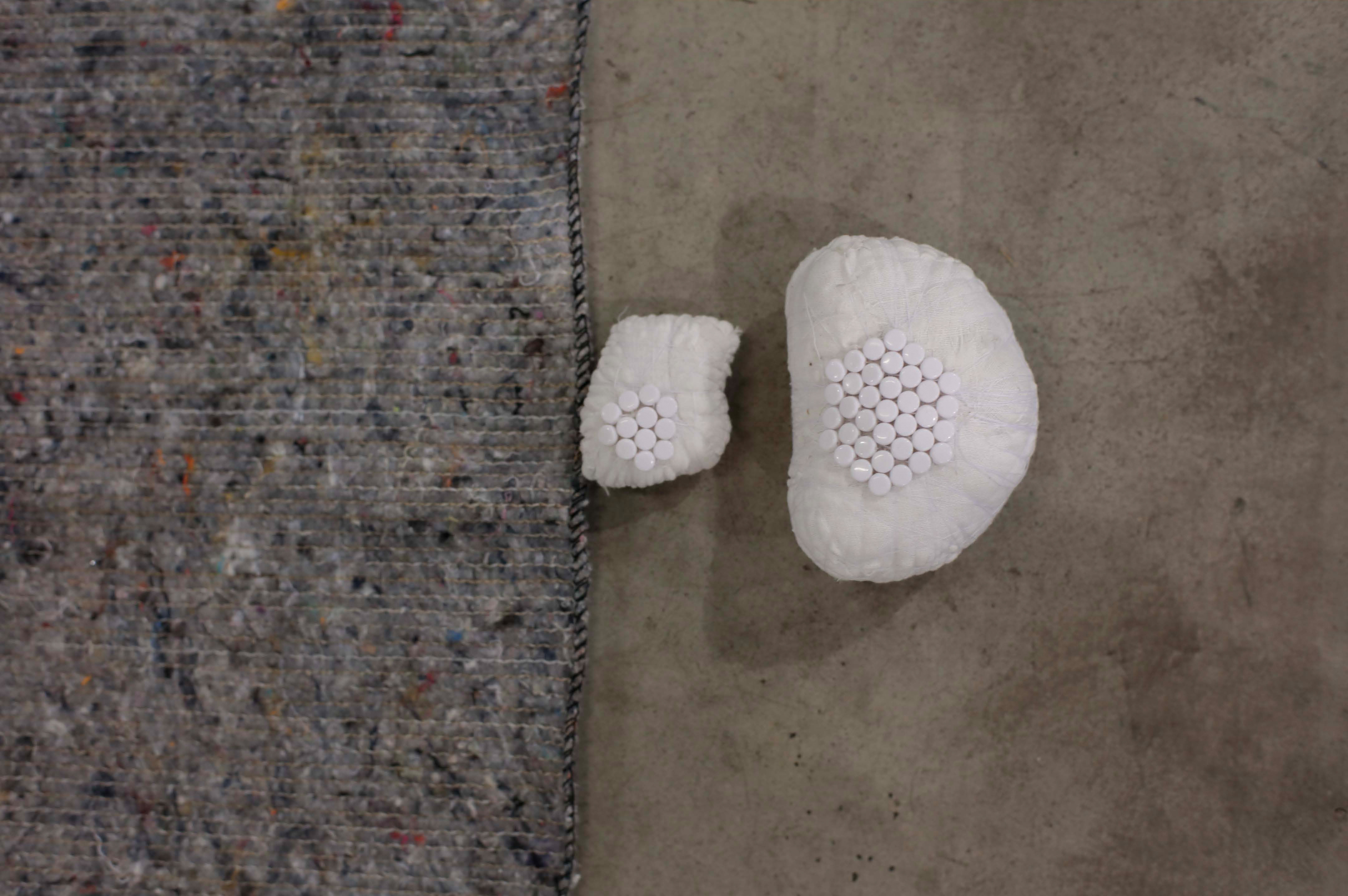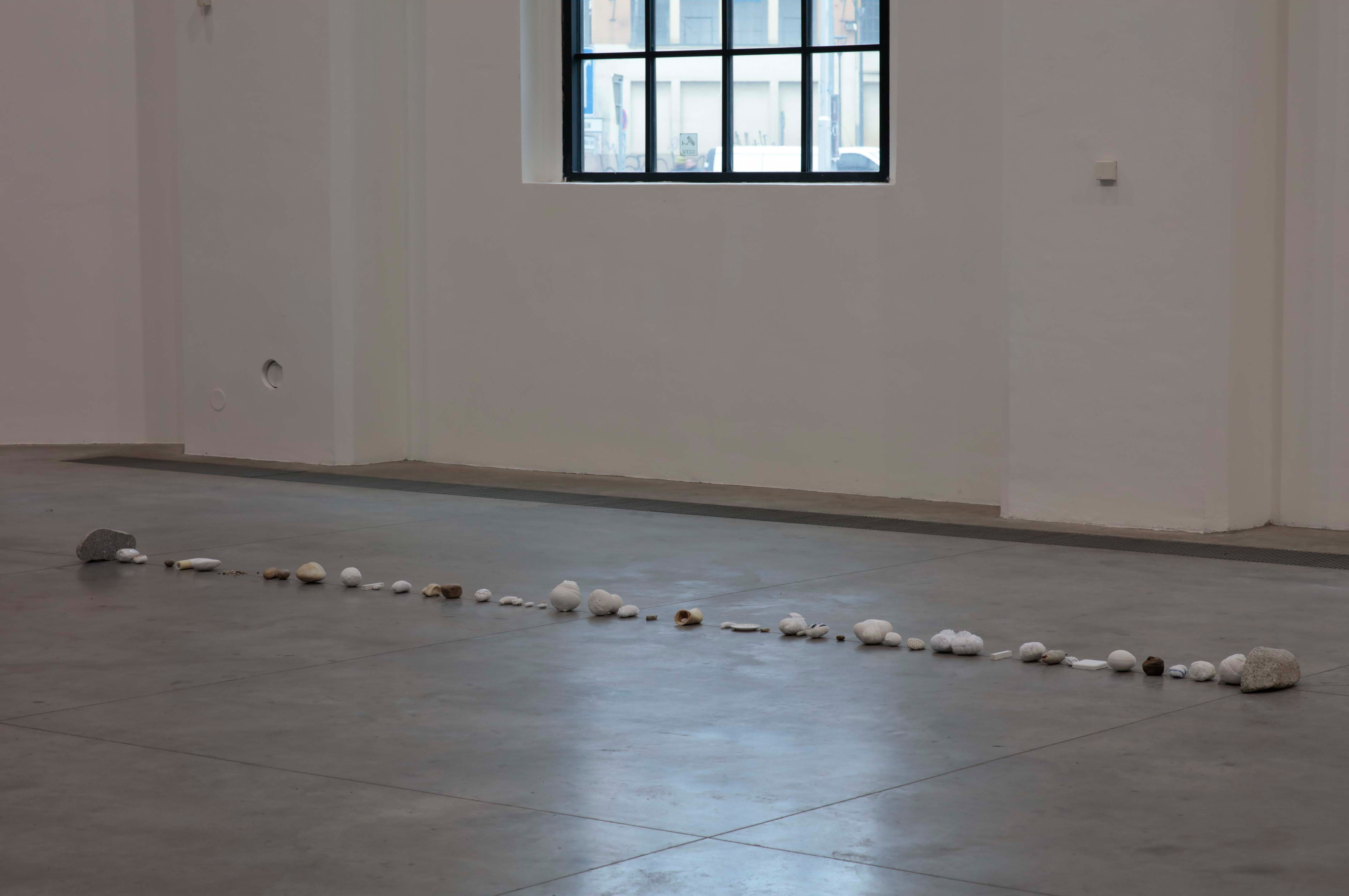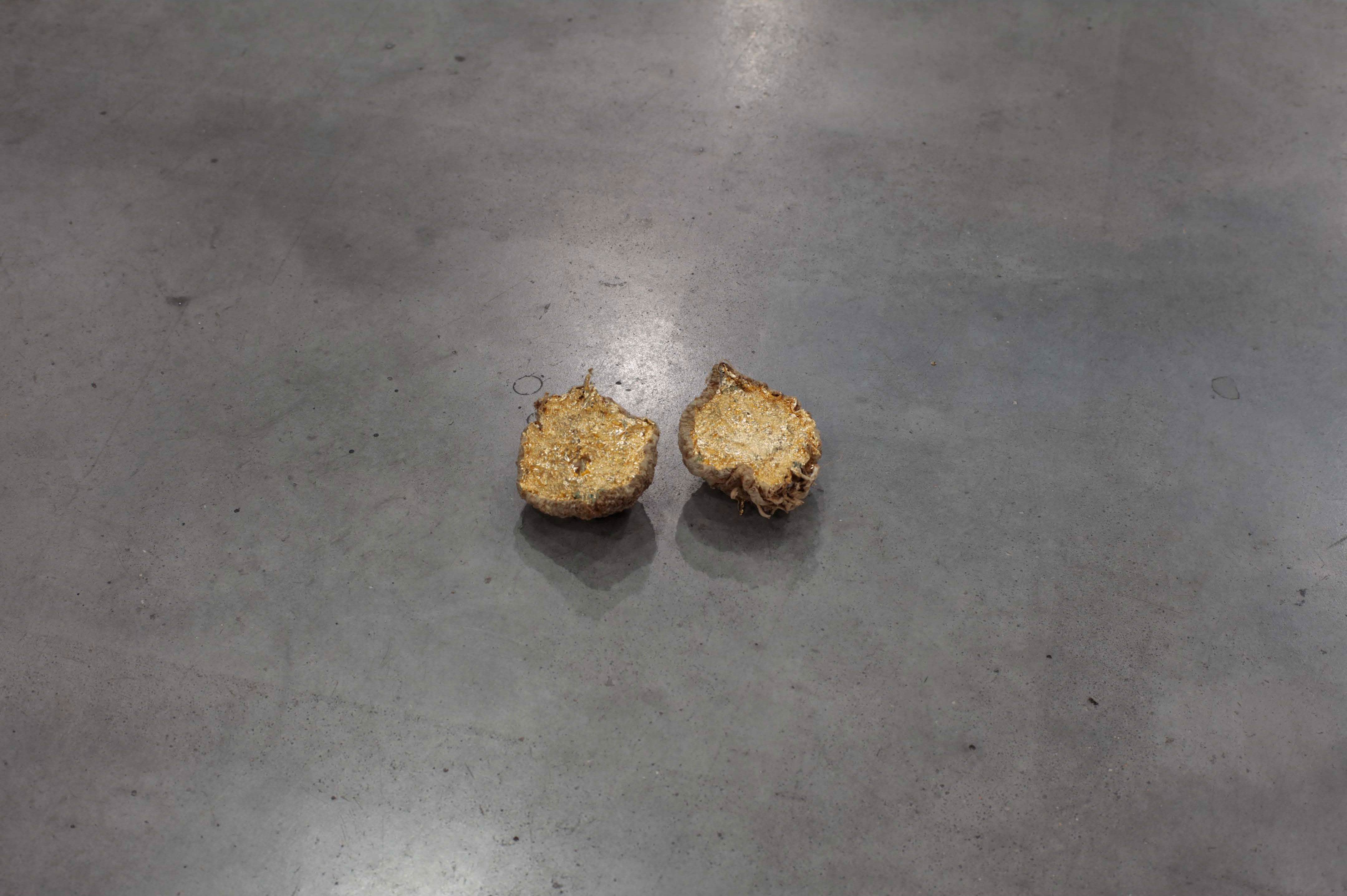Fait Gallery, Brno
—
Denisa Lehocká
Luno 550
Although in various exhibitions by Denisa Lehocká some objects seem to repeat, for every exhibition the artist compiles newly produced works, drawings, paintings and materials. After they have been finished she saves them in the darkness. The final art piece is thus formed of layers, in which some of the processes and objects repeat, others change based on changes of the circumstances. And this is even the case with the installation in the monumental space of the Fait Gallery.
The author describes her work as a three dimensional collage. By this she directs the observer to the views from two perspectives. From the point of spatiality, ie the history of sculptural plasticity. In this line, the viewer follows the sculptural references of forms to organic abstract sculpture, Lygia Clark and minimalism, Buckminster Fuller and Shigeru Ban. Spatiality in the meaning of a site-specific can describe the relationship of objects to the specifics of a particular place / non-place. The second perspective to which the author draws the viewer's attention is a collage. Collage as a symptomatic approach by avant-gardes of the 20th century using vivisection and stapling fragments of reality in many references from dada (Schwitters, Hausmann), through cubism, but mainly surrealism (Ernst, Oppenhem), avant-garde of the 60s (Oppermann) to the collage of forensic methods in discourses of the truth.
For a description of the sculptural parts of the installation by Denisa Lehocká (because it contains also objects) fits the concept of a slow statue. Slow sculpture: repeated soaking and drying plaster, embroidery thread, sewing beads, paint sedimentation, drying of saturated solutions, entanglement and stranding of threads, cotton, rope, etc. The slow statue not only arises slowly, but every procedure used has, within the group of sculptures and objects, guaranteed the necessary time for proceeding. Although the slow statues do not contain expressiveness, or gesture, the author can’t delegate those to third parties. The materials used are readily available, limited, which reminds the viewer of Art Pover and following trends. The dimensions of the objects are rather small, handheld, citing either a minimalist approach of putting one thing after another, or are arranged in nests, which comes from the organic set up. The form even the antiform. Objects are accurate: plaster rotating shapes created by repeated soaking and dripping plaster under the influence of gravity, artfully rolled ropes, braided leather cord, embroidered, quilted and layered fabrics, empty bowls, plastic sheeting with a hint of color, twigs painted with colour, upstands, bases, beads, saturated salt and sugar solutions, stones, cut stones, gold and celery root. Dozens of drawings on the edge of the test of colours and pigments, variations on geometric sketches, embroideries and diary entries.
From an art theorist or art historian it is required not only to translate the sensory data into verbal descriptions, but with analytical observation and historical knowledge to reveal the contents of artistic works. However, revealing is a confusing word. Ruth Noack in the text of Who's Scared of Denisa Lehocká? [1] comes with a few suggestions on how to interpret this work. I would like to follow up on one of her arguments preceded by the question: how do I know, how can we prove that the artist is not crazy (and that, for example, what she does, is not just a game imitating artistic practices)? Lehocká is not supposed to be crazy, because she knows what she does. Such an argument would not prove to be right, because people experiencing mental disorder typically do not doubt what they are doing and experiencing, whether it the most unreal thing. I prefer to ask how to define normality? Gladys Swain define mental illness as "a state of separation from the common sense." Melanie Klein on the other hand argues that the schizo-paranoid state, is a fate common to all subjects after their birth and normality is a way how to pacify and overcome this initial state.
Noack asks the question so openly, because she can see that the creative process of Denisa Lehocká takes place outside the functions of language and is found in the area of pre-connotation. As per Noack, Lehocká tries to postpone the possible thoughts about the meaning of art as far as possible. She works beyond the point where "to it / meaning the art / the connotation digs its claws." A similar place can exist either in one's mind (and then it would be a mind removed from one of the functions of intelligence, that is being referred to "healthy" by the social censor), or in non-human epochs or universes. It seems that Lehocká has just constructed a similar space. It is a space defined on one pole purely by empirical focus on the physical and chemical processes of materials of natural character that she works with - layering, pouring, dripping, evaporation, drying, becoming drying, painting, cutting, adding, removing ... On the other pole there is an authorial subject that although "knows what she's doing," she refuses to add a meaning to her actions. And if someone wants to enter the space where the forms are without meaning, it seems that to remove common sense is a necessary condition for a walk through. It is not about art brut, nor temporary, stimulated or controlled madness. How Noack notes it is not even passage into the space of unconscious, automatism. It actually is a syncretic mix combining the methods of art history of last century.
If we somehow deepened the nook of pre-connotation, it would be a mistake to immediately wrap Denisa Lehocká’s art work by speculation about what they should have or may imply. That is the challenge with which the artist turns to the viewer. A mediator - curator, theorist, historian should not act as an expert or the owner of the interpretation key, but as one of the most ignorant viewers.
[1] A. Kusá, M. Mitášová, D. Lehocká, Denisa Lehocká, SNG Bratislava, 2012, pp. 17-25.
Curator: Vít Havránek
Inquiry
Please leave your message below.
